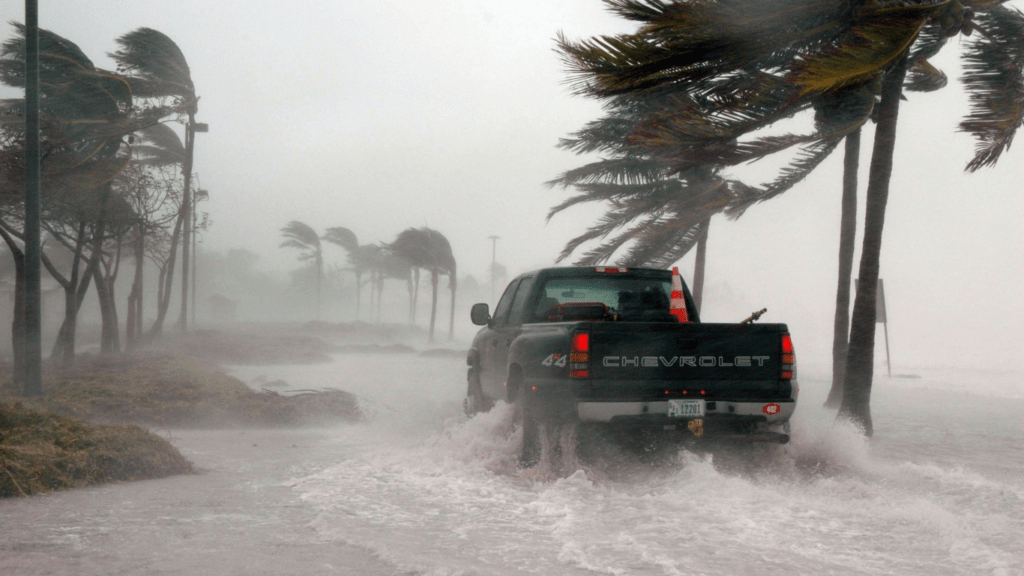Understanding Climate Change
Climate change refers to significant alterations in global weather patterns over extended periods. It’s driven primarily by human activities that increase greenhouse gases like carbon dioxide and methane in the atmosphere. Burning fossil fuels, deforestation, and industrial processes contribute heavily to these emissions.
Greenhouse Effect
The greenhouse effect refers to the process where certain gases trap heat in the Earth’s atmosphere. These gases, including carbon dioxide, methane, and nitrous oxide, form a “blanket” that prevents heat from escaping into space. While this natural process keeps the planet warm enough to support life, increased concentrations of greenhouse gases have enhanced this effect, leading to global warming.
Key Indicators
Several indicators signal the presence and progression of climate change:
- Rising Temperatures: Global average temperatures have increased by approximately 1.1°C since the late 19th century, with the last decade being the warmest on record.
- Melting Ice: Ice sheets in Greenland and Antarctica are losing mass, and glaciers worldwide are retreating.
- Sea Level Rise: Global sea levels have risen about 20 centimeters since 1880, with the rate of rise accelerating in recent decades.
- Extreme Weather Events: Increased frequency and intensity of storms, heatwaves, and droughts have been observed across the globe.
Causes
Human activities are the primary drivers of climate change:
- Fossil Fuel Combustion: Burning coal, oil, and natural gas for energy and transportation releases significant amounts of carbon dioxide.
- Deforestation: Clearing forests for agriculture or urban development reduces the planet’s capacity to absorb carbon dioxide.
- Industrial Processes: Manufacturing and chemical production emit large quantities of greenhouse gases.
Impacts
The impacts of climate change are diverse and far-reaching:
- Health Risks: Increased heatwaves can cause heat-related illnesses and exacerbate chronic conditions.
- Ecosystem Disruption: Many species face habitat loss, altered food sources, and changing migration patterns.
- Economic Costs: Damage from extreme weather events leads to significant economic losses for communities and nations.
- Agricultural Challenges: Changes in temperature and precipitation patterns affect crop yields and livestock productivity.
Understanding these aspects of climate change helps create a foundation for addressing and mitigating its effects.
Recent Global Temperature Trends
Global temperatures are rising, reflecting significant climate change impacts. I’ll delve into the historical data and recent anomalies to illustrate these trends.
Historical Data
Over the past century, global temperatures have increased by about 1.2°C (2.16°F). NASA’s Goddard Institute for Space Studies reports that this warming trend accelerated during the last few decades. Most of the warmest years on record have occurred since 2000. The 2010s were the warmest decade ever documented. This long-term data highlights a clear upward trajectory in global temperatures, driven primarily by increased greenhouse gas emissions.
Recent Anomalies
In recent years, temperature anomalies have become more pronounced. For instance, 2020 tied with 2016 as the warmest year on record, according to the National Oceanic and Atmospheric Administration (NOAA). Europe experienced its hottest summer in 2021. The Arctic region shows alarming warming, with temperatures rising at twice the global average rate. These anomalies underscore the urgency of addressing climate change worldwide.
| Year | Significant Events |
|---|---|
| 2000-2020 | 19 of the 20 warmest years recorded |
| 2016 | Tied 2020 as the warmest year |
| 2021 | Europe’s hottest summer |
Temperature data trends signal significant and persistent warming, necessitating immediate climate action.
Impact on Natural Disasters

Global climate change has heightened the intensity and regularity of natural disasters. Extreme weather events are more frequent and severe due to rising global temperatures.
Increased Frequency
Increased temperature contributes to more frequent natural disasters like hurricanes, wildfires, and floods. According to the National Oceanic and Atmospheric Administration (NOAA), the North Atlantic hurricane activity has increased significantly, with an upward trend in the frequency of Category 4 and 5 hurricanes. More intense heatwaves have led to increased wildfire risks, particularly in California and Australia. Heavy rainfall events, amplified by warming atmospheric temperatures, are causing more frequent flooding, especially in coastal and riverine areas.
Severity and Cost
Severity and cost of natural disasters have escalated due to climate change. According to the World Meteorological Organization (WMO), in 2020, the world experienced a record number of expensive weather disasters, with total damages exceeding $100 billion. Hurricanes, like Hurricane Harvey in 2017, caused over $125 billion in damage, primarily due to excessive rainfall and prolonged flooding. Wildfires in California during 2020 resulted in $16.5 billion in damages. These figures highlight the financial burden and human impact as communities struggle to recover and rebuild.
Policy and Legislation
International Agreements
Global climate coordination relies on international agreements. The Paris Agreement, adopted in 2015, commits countries to keeping global temperature rise below 2°C above pre-industrial levels, aiming for 1.5°C. Over 190 nations have ratified it, showing widespread commitment. Parties enhance their climate action plans, known as nationally determined contributions (NDCs), every five years.
The Kigali Amendment to the Montreal Protocol targets the reduction of hydrofluorocarbons (HFCs). These potent greenhouse gases have a significant impact on global warming. The amendment, effective since 2019, has seen approval from over 120 countries, pushing for an 85% phase-down of HFCs by 2045.
The Kyoto Protocol, though older and largely succeeded by the Paris Agreement, still impacts climate policies. It set binding emission reduction targets for developed countries, laying the groundwork for future agreements. Its legacy continues influencing carbon trading and climate finance mechanisms.
National Policies
Countries adopt varied national policies to address climate change. In the US, the Inflation Reduction Act (IRA) of 2022 aims to cut greenhouse gas emissions by approximately 40% by 2030. It allocates $369 billion for clean energy incentives, electric vehicle (EV) adoption, and carbon capture technologies.
The European Green Deal, initiated by the European Union, targets climate neutrality by 2050. It proposes a set of actions across sectors like energy, industry, and agriculture to achieve a 55% reduction in greenhouse gas emissions by 2030, compared to 1990 levels.
China, the world’s largest emitter, aims for carbon neutrality by 2060. The 14th Five-Year Plan (2021-2025) emphasizes renewable energy expansion, energy efficiency, and carbon trading mechanisms. China committed to peaking emissions before 2030 as part of its Paris Agreement obligations.
India focuses on renewable energy growth to achieve its climate targets. With initiatives like the International Solar Alliance and a pledge to reach 450 GW of renewable energy capacity by 2030, India aims to reduce the carbon intensity of its economy by 33-35% from 2005 levels.
Technological Innovations
As the effects of climate change become more pronounced, technological innovations play a crucial role in mitigating its impacts. These innovations are pivotal for achieving climate goals and fostering sustainable development.
Renewable Energy
Renewable energy technologies have made significant strides recently. Solar power, for instance, has seen a drastic reduction in costs, making it more accessible. According to the International Renewable Energy Agency (IRENA), solar PV costs dropped by 82% between 2010 and 2019. Wind power has also experienced growth, with global installed wind capacity exceeding 651 GW by 2020. These advancements help reduce reliance on fossil fuels and lower greenhouse gas emissions.
Additionally, countries are increasingly investing in renewable energy infrastructure. Germany’s Energiewende initiative aims to derive 65% of its electricity from renewables by 2030. In the U.S., renewable energy accounted for 20% of utility-scale electricity generation in 2020, according to the Energy Information Administration (EIA). These efforts signify a shift toward cleaner energy sources.
Carbon Capture
Carbon capture and storage (CCS) technologies offer a way to reduce carbon dioxide emissions from industrial sources. CCS works by capturing CO2 from power plants and other industrial processes, then storing it underground. The Global CCS Institute reports that there are 26 operational CCS facilities worldwide, capturing around 40 million metric tons of CO2 annually.
Innovation in CCS technology is ongoing. For example, direct air capture (DAC) is an emerging technology that extracts CO2 directly from the atmosphere. Companies like Climeworks and Carbon Engineering are leading in this field. The scalability of these technologies promises significant reductions in atmospheric CO2 levels, provided they receive adequate investment and policy support.
Combined, these technological innovations highlight the importance of investing in advanced solutions to combat climate change effectively.
Community Initiatives
Communities worldwide are actively combating climate change through local actions and collective efforts. These grassroots movements and educational programs play a vital role in this endeavor.
Grassroots Movements
Grassroots movements have emerged globally to address climate change at the local level. These movements often organize community events, advocate for policy changes, and promote sustainable practices. Examples include the global Fridays for Future campaign, started by Swedish activist Greta Thunberg, which mobilizes students to demand climate action. In the U.S., the Sunrise Movement advocates for political action to address climate change and promote the Green New Deal. Local groups like Transition Towns focus on creating sustainable communities by promoting local food production, renewable energy, and reducing dependence on fossil fuels. These grassroots efforts build awareness and drive tangible changes in reducing carbon footprints.
Educational Programs
Educational programs are essential for increasing climate literacy and fostering a culture of sustainability. Schools and universities incorporate climate science into curricula, equipping students with the knowledge to understand and address climate challenges. Organizations like the Climate Reality Project, founded by Al Gore, provide training to individuals to become effective climate communicators. Initiatives like the Eco-Schools program engage students in sustainable practices through hands-on projects in over 70 countries. Community workshops and online courses further extend learning opportunities, empowering people with practical skills for energy efficiency, recycling, and sustainable living. These educational efforts galvanize collective action by informing communities about the impact of climate change and ways to mitigate it.


 Amelie Glover played a pivotal role in shaping the success of News Flip Network through her expertise and dedication. With a keen eye for detail, she focused on ensuring the platform’s content flows smoothly, making it both engaging and informative. Glover’s efforts in organizing the site’s structure and managing editorial tasks helped create a seamless user experience, enhancing the accessibility of news for readers around the world.
Amelie Glover played a pivotal role in shaping the success of News Flip Network through her expertise and dedication. With a keen eye for detail, she focused on ensuring the platform’s content flows smoothly, making it both engaging and informative. Glover’s efforts in organizing the site’s structure and managing editorial tasks helped create a seamless user experience, enhancing the accessibility of news for readers around the world.